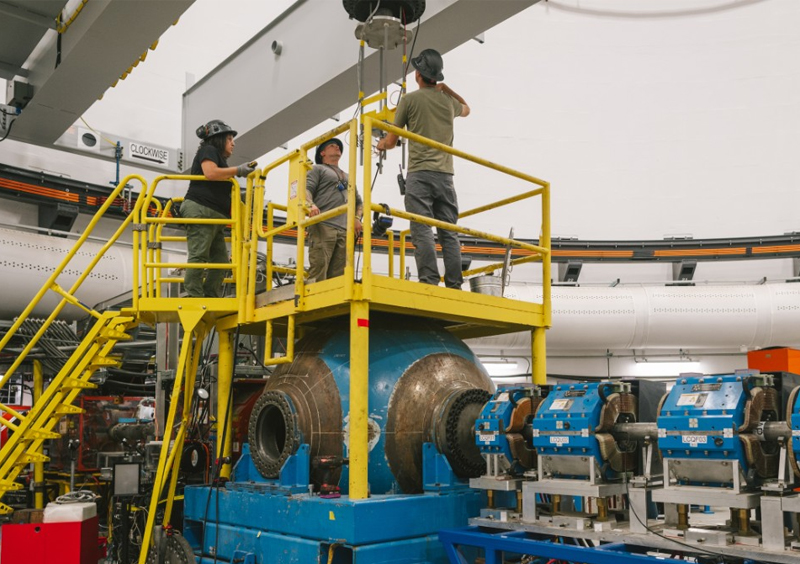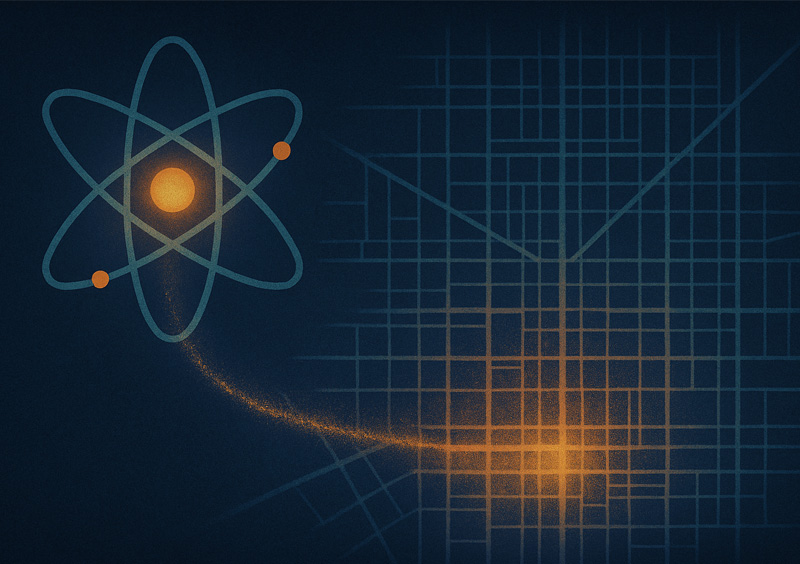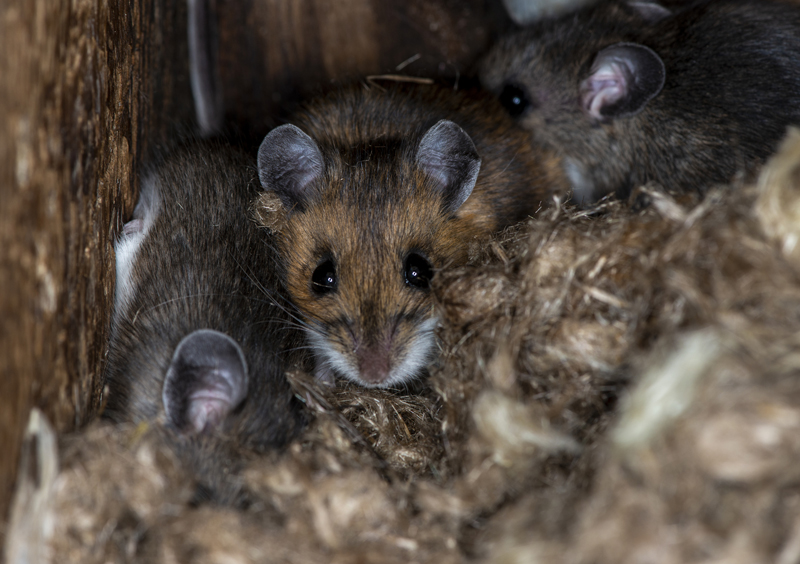Finding neutrinos — elusive subatomic particles that may hold the key to some of the most tantalizing questions about the nature of the universe — requires exquisitely fine-tuned equipment.
A new multi-purpose lab, located at the Los Alamos Neutron Science Center, aims to help with that search. Constructed through a close collaboration between the Physical Sciences and Infrastructure & Capital Projects directorates, the lab will be a test facility for new calibration devices for the Deep Underground Neutrino Experiment.
The calibration devices in this space will be tested in a cryogenics test stand before shipping to the European Center for Nuclear Research lab in Switzerland for installation on the ProtoDUNE experiment, which is a 770-ton prototype of DUNE.
"Neutrinos are sometimes called 'nature's ghosts,' as they are one of the most abundant particles in the universe, yet they rarely interact with matter," said Laboratory physicist Sowjanya Gollapinni, who spearheads development of DUNE's calibration and cryogenic instrumentation. "This makes them incredibly difficult to detect."
DUNE aims to launch the most intense neutrino beam in the world and observe the particles in two detectors, now under construction — a near detector in Illinois and a far detector, some 800 miles away in South Dakota. The Lab is a key player in the experiment, which has more than 1,400 international collaborators.
Precise equipment requires precise operations
To search for neutrinos, DUNE will use a relatively recent development in this high-energy physics research: The use of 70,000 tons of cryogenic liquid argon as a detection medium. The hope is that this extremely cold environment will enable more precise measurements when DUNE experimentalists study how neutrinos transform their identity, according to Gollapinni, who is also the U.S. scientific coordinator for DUNE's second construction phase.
To develop the instruments that can operate in such a harsh setting, Gollapinni and her team required a space to characterize different types of lasers and perform alignment operations along with assembling and testing equipment that ultimately guide the laser beams into the DUNE detector. This data will enable precise spatial and timing calibration of signals left by particles in DUNE.
It takes a village to build a state-of-the-art facility
Creating this complex, multi-purpose testing environment required collaboration between scientific, operations and construction teams at Los Alamos.
"The multi-purpose lab project demonstrated how complex challenges could be overcome when a diverse team works in partnership with a spirit of understanding, creativity and collaboration," said Jerome Aigner, of the Lab’s Project Execution Office. "The collective support behind this project enabled us to build momentum and overcome obstacles that threatened to delay it. We never lost sight of the importance of delivering a complete and useable facility, on time, while focusing on a safe and secure work environment."
"It takes a team working closely together to work through all the challenges to get a new state-of-the-art facility brought online," Gollapinni said.
LA-UR-24-30175






